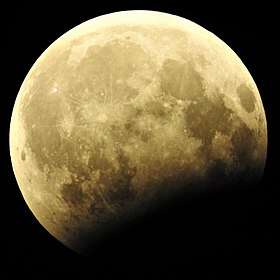July 1963 lunar eclipse
A partial lunar eclipse took place on July 6, 1963 with an umbral eclipse magnitude of 0.70602. The Moon was strikingly shadowed in this deep partial eclipse which lasted 3 hours exactly, with 71% of the Moon in darkness at maximum. A partial lunar eclipse occurs when the Earth moves between the Sun and Moon but the three celestial bodies do not form a straight line in space. When that happens, a small part of the Moon's surface is covered by the darkest, central part of the Earth's shadow, called the umbra. The rest of the Moon is covered by the outer part of the Earth's shadow called the penumbra. It was the second of three lunar eclipses in 1963, the first was a penumbral lunar eclipse on January 9, 1963 and the third and last was on December 30, 1963.[1]
| Partial Lunar Eclipse July 6, 1963 | |
|---|---|
| (No photo) | |
 The moon passes west to east (right to left) across the Earth's umbral shadow, shown in hourly intervals. | |
| Series | 119 (59 of 83) |
| Duration (hr:mn:sc) | |
| Partial | 5:27:18.2 |
| Penumbral | 2:59:55.6 |
| Contacts (UTC) | |
| P1 | 19:18:43.6 (6 July 1963) |
| U1 | 20:32:29.1 (6 July 1963) |
| Greatest | 22:02:23.8 (6 July 1963) |
| U4 | 23:32:24.7 (6 July 1963) |
| P4 | 00:46:01.8 (7 July 1963) |
Visibility
The partial eclipse was visible in Southeastern Atlantic, Africa, Europe and western Asia, seen rising over South America, and setting over Asia and Australia.

Related lunar eclipses
Lunar year series
| Descending node | Ascending node | |||||
|---|---|---|---|---|---|---|
| Saros | Date Viewing |
Type Chart |
Saros | Date Viewing |
Type Chart | |
| 109 | 1962 Jul 17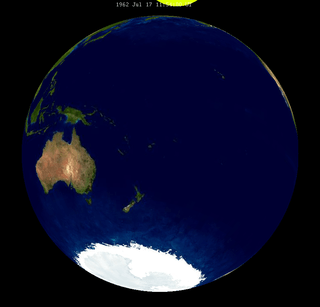 |
Penumbral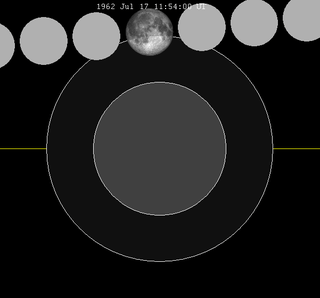 |
114 | 1963 Jan 9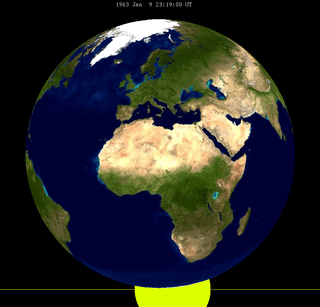 |
Penumbral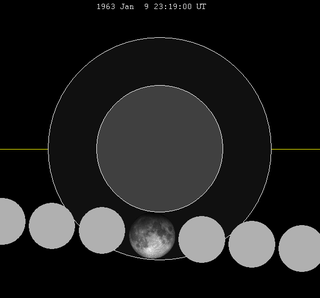 | |
| 119 | 1963 Jul 6 |
Partial |
124 | 1963 Dec 30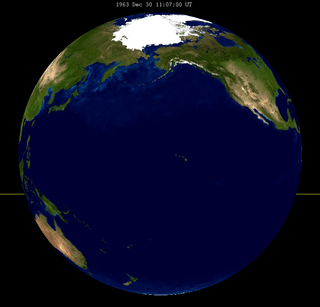 |
Total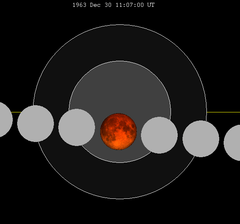 | |
| 129 | 1964 Jun 25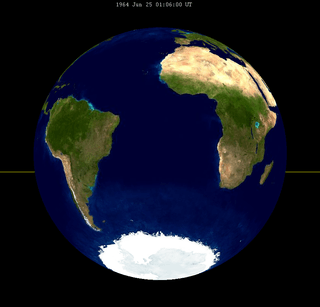 |
Total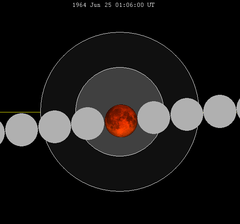 |
134 | 1964 Dec 19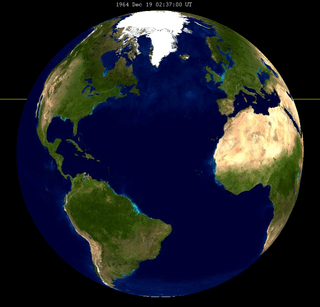 |
Total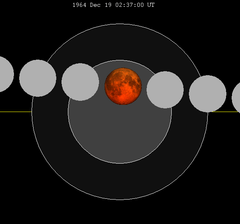 | |
| 139 | 1965 Jun 14 |
Partial |
144 | 1965 Dec 8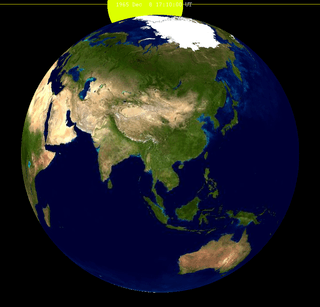 |
Penumbral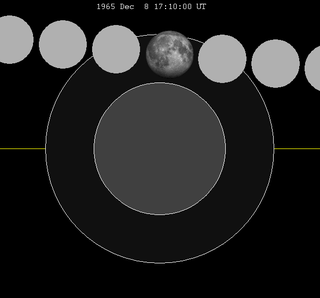 | |
| Last set | 1962 Aug 15 | Last set | 1962 Feb 19 | |||
| Next set | 1966 May 4 | Next set | 1966 Oct 29 | |||
Half-Saros cycle
A lunar eclipse will be preceded and followed by solar eclipses by 9 years and 5.5 days (a half saros).[2] This lunar eclipse is related to two total solar eclipses of Solar Saros 126.
| June 30, 1954 | July 10, 1972 |
|---|---|
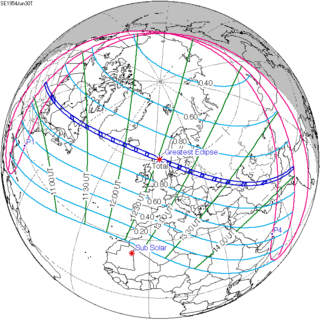 |
 |
See also
- List of lunar eclipses
- List of 20th-century lunar eclipses
Notes
- Hermit Eclipse: Saros cycle 119
- Mathematical Astronomy Morsels, Jean Meeus, p.110, Chapter 18, The half-saros
